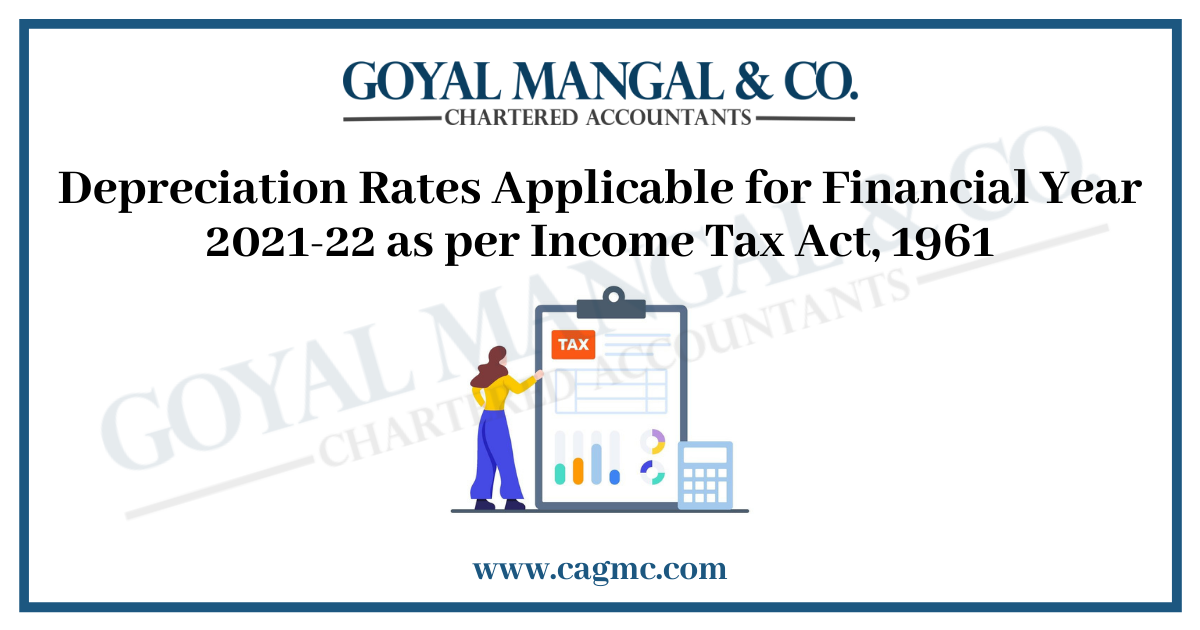
Depreciation means a reduction in the real value of tangible used by the assessee in the course of business or profession. Depreciation can be claimed as a deduction by the assessee for investing in assets like furniture, plant & machinery or other such tangible assets, for the previous year.
The concept of depreciation was introduced under the Income Tax Act for writing off the cost of an asset over its useful life. Depreciation is a compulsory deduction that can be claimed by a taxpayer. There are different methods for calculating depreciation on assets, the most popular ones being – Straight-line method (SLM) and the Written Down Value method (WDV).
Here in this article, we will discuss about the Applicability of depreciation; Different type of methods to calculate depreciation and Rates of depreciation as per Income Tax Act, 1961.
Section 32 of the Income Tax Act, 1961[1] regulates & governs the depreciation in respect of:
It is pertinent to mention that these assets must be used in connection with business or profession and should be owned, either wholly or partly, by the assessee.
Allowance of depreciation is calculated as per the WDV method with the exception of an undertaking that is engaged in the generation of power or distribution of power.
Depreciation allowance is apportioned in case of amalgamation or demerger of two companies. Such allowance is proportionate between an amalgamated and amalgamating company in case of amalgamation. And in the case of demerger, it is proportioned between demerged and the resulting company.
As per the Accounting Standard-19, in the case of financial lease transactions, the right to claim depreciation is allowed to lessee as he exercises such rights in the capacity of the owner.

Applicability of Depreciation
It is well known that depreciation is a non-cash expense and the benefit of it can be enjoyed just like the other expense but the major thing is that what are the circumstances when this depreciation can be calculated or the cost of asset is eligible to be allowed as depreciation.
NOTE: – The number of days used in business are calculated not from the date of purchase or delivery but from the date on which the asset is ready to use and is initialized in the business place.
Here assets are divided into two categories on the basis of similarity in usage of work as follows;
After that the applicable rates be applied on the net WDV of the asset block to calculate depreciation.
When the asset is purchased on the name of business but the is used for personal use then the depreciation is not allowed as exemption.
When the asset purchased and used in the business premises then only the depreciation is allowed for depreciation.
To calculate depreciation there are several methods described by the law, but mainly the below discussed methods are used: –
| Year | Opening Balance | Depreciation | Closing Balance |
| 1 | 200000 | 20000 | 180000 |
| 2 | 180000 | 18000 | 162000 |
| 3 | 162000 | 16200 | 145800 |
And the table continues till the value of asset is equal to or less than 90% of the original price of the asset.
The rates of depreciation applicable for the assets are in the below table: –
Depreciation plays a vital role in taxation of businesses as it is a genuine and allowable deduction against business income as per Section 32(1) of Income Tax act. If the assessee fails to claim depreciation in any F.Y. then he cannot claim it any further as per the provisions of the act. In many cases when assessee is claiming depreciation it further reduces the net Income under the head “PGBP” and thus results as a tax saving option. But the way depreciation is being charged as per the provisions of the Income Tax Act needs to be looked upon once again as there are several points which result in unnecessary litigation such as – days of put to use, rates of depreciation, methods of depreciation etc. Although the most important point is if the assessee fails to claim depreciation in one F.Y. then he cannot claim depreciation any further which is not beneficial on the part of the taxpayer that means if by mistake a return is being filed by the assessee without claiming depreciation then he cannot claim depreciation in subsequent years.